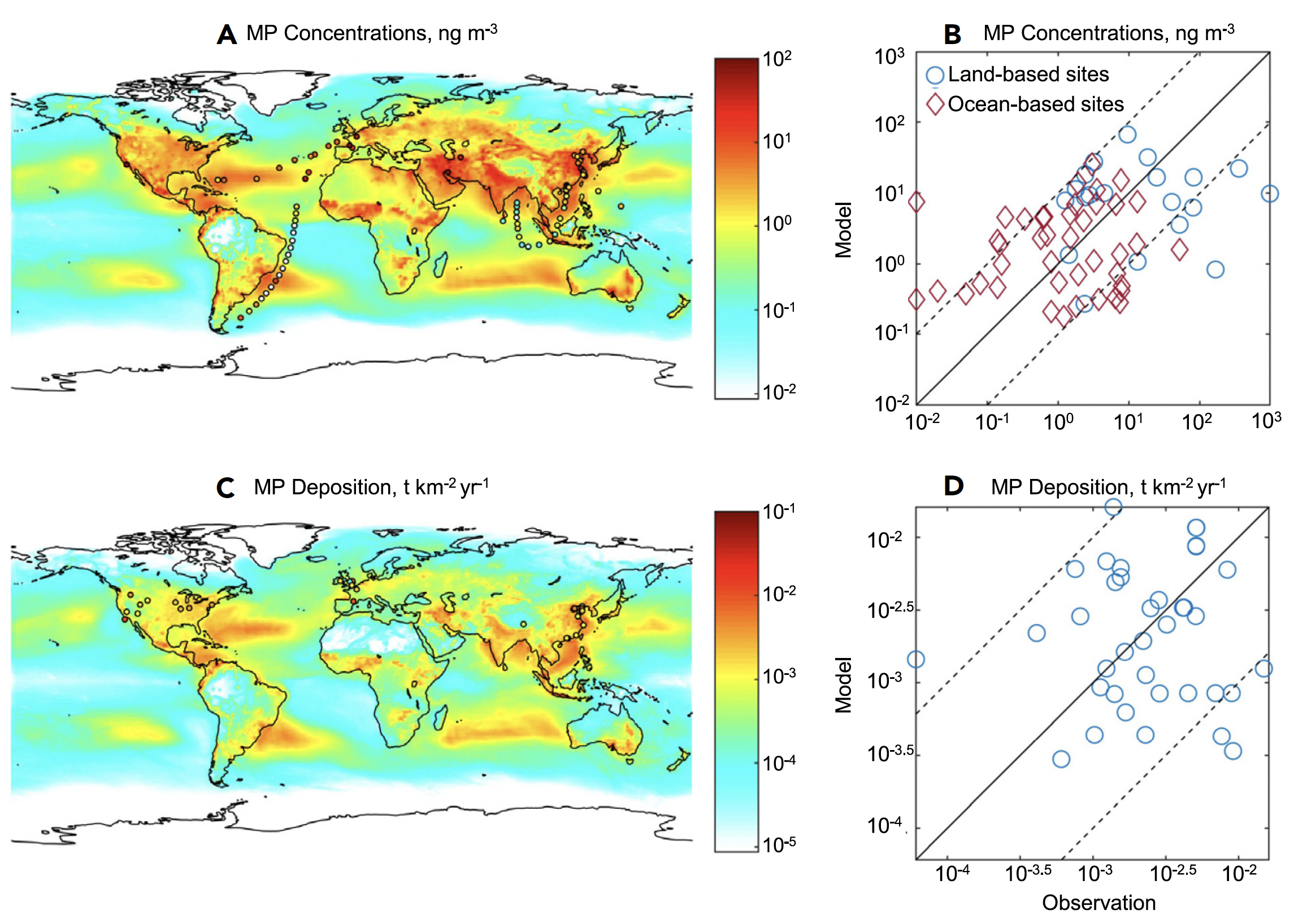Plastic
- MITgcm-Marine Plastic Model (NJU-MP)
This model is Euler-based and simulates the emission, transport, diffusion, sinking, and transformation (including biofouling, fragmentation, and abrasion) of plastics in each model grid cell. The model has a resolution of 2°x2.5° horizontally with 22 vertical levels, and a time step of 4 h.
The ocean circulation data are from the Integrated Global Systems Model (IGSM). We run the model from 1950 to 2018. The model includes five categories of different chemical compositions and the density of each category is pre-determined: polyethylene (PE, 950 kg/m3), polypropylene (PP, 900 kg/m3), polyvinyl chloride (PVC, 1410 kg/m3), polystyrene (PS, 1050 kg/m3), and acrylonitrile butadiene styrene (ABS, 1050 kg/m3). Each category has six size bins with bounds equally distributed on a log scale: four for microplastics: <0.0781, 0.0781–0.3125, 0.3125–1.25, and 1.25–5mm, and two for macroplastics: 5–50 and >50mm.
The plastics’ density is increased when biofouled and we consider three states for PE and PP: floating, neutral, and sinking (no floating and neutral states for PVC, PS, and ABS as they are originally heavier than or as heavy as seawater).
Please refer to Peng et al. 2021 and Zhang et al. 2023 for more details.
Simulated surface ocean total plastic mass concentration
- GEOS-Chem-Microplastic (GEOS-MP)
The global three-dimensional GEOS-Chem v.14.1.1 is adopted to simulate the atmospheric emission, transport, and deposition of MPs. The model is run with a 0.5 latitude x 0.625 longitude horizontal resolution and 72 vertical layers extending to 0.01 hPa. The model is driven by meteorological data from the GEOS MERRA-2 reanalysis data. We run the model for the year 2018–2020 with a spin-up time of 2 months. The model is run in an aerosol-only model including aerosols of anthropogenic and natural sources (sulfate, nitrate, ammonium, carbonaceous, dust, and sea salt) with archived gaseous phase chemical tracers.The MPs are added to the GEOS-Chem aerosol-only simulation as insoluble aerosol tracers with six different aerodynamic diameters (0.3, 2.5, 7, 15, 35, and 70 mm). As the density of plastics is much larger than the air, we use a uniform 1 g/cm3 for all particles.
Please refer to Fu et al. 2023 for more details.

